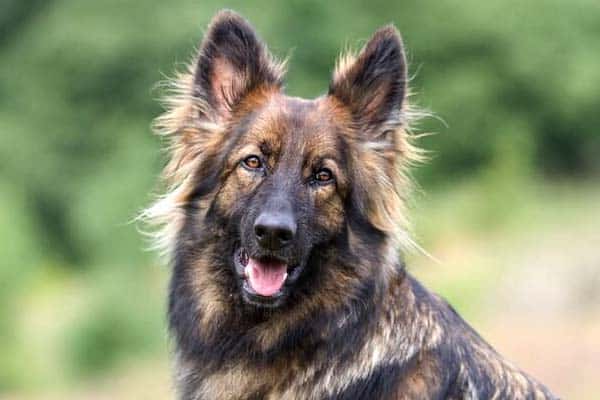

So we breeders work in the dark, guessing which combinations of breeding partners will give us what we want, grieving when individual pups get a concentration of some bad genes for a certain trait.

The problem with traits that have up to 30 different recessive genes interacting – such as hip dysplasia, elbow dysplasia, eye conditions such as pannus and EPI (Exocrine Pancreatic Insufficiency) – is that it’s too complicated a trait to ever develop a gene test. I follow my pups all their lives and keep track of any problems they might have, hopefully minor, and use that knowledge as I choose future breeding partners. One cannot ever guarantee that any individual will get all good genes because that’s not how nature works – the genes sort randomly. When a particular pup is conceived, it may get an excess of the bad genes and have a health problem. The problem is that most health problems are multi-gene recessive faults and can hide in the gene pool for generations. When I keep pups from my line, usually 2 out of 3 pass all their health screenings, so I feel that all these generations of serious health screenings are concentrating the good genes so that my pups have a better chance to be healthy than most GSD’s. I won’t try more than three times with a breeder or bloodline (one bought, two replacements) but if the third one doesn’t pass I figure it’s my bad luck and give up.

When I buy pups as breeding prospects, usually 1 out of 3 pass all my health screenings at age 2. Thyroid ad eye certifications must be redone annually.
#Sable german shepherd puppies plus#
When the pup turns two years, I do the final OFA hips & elbows, plus OFA thyroid, OFA cardiac and blood tests for bleeding disorders and EPI. I do PennHip, OFA prelim hips & elbows, and OFA eye screenings at about 1 year.
#Sable german shepherd puppies free#
The dogs must also be certified free of von Willebrand’s and hemophilia (bleeding disorders) and EPI (Exocrine Pancreatic Insufficiency). My required certifications before I breed one of my dogs include two hip evaluations (OFA – Orthopedic Foundation for Animals and PennHip) I also do OFA elbows, OFA cardiac, OFA thyroid, OFA degenerative myelopathy and OFA Eyes. I do more health screening on a prospective breeding prospect than most breeders. The CC litter pups don’t need two “C” words in their registered names as people sometimes assume, but their registered names must be different from those of the C litter. For example, photos from the C litter are distinguished from those of the CC litter by the use of the one-letter or the two-letter label. I’m now going through the alphabet the second time and those litters are designated AA, BB and so on, mostly because I still have photos that I occasionally use from the earlier litters. My first European-line litter, born in 1997, was the “A” litter, and I’ve worked my way through the alphabet since then. In the European lines, it’s customary to assign each litter an alphabet letter with which pups must be registered. In the 1990’s I switched to European working lines. I began with the old American lines, which still had a lot of German imports in their pedigrees. I am now in the 6th generation of my female line: Glory (1st generation) – Jubilee (2nd generation) – Quinta (3rd generation) – Lively (4th generation) – Spirit, Soleil & GloryToo (5th generation) – and their puppies, Mercy and Lovely (6th generation). If a dog didn’t pass all the screenings, I spayed or neutered it and placed it in a pet or working home. As I went on and encountered other problems (such as eye conditions and bad hearts) in dogs I bought as breeding prospects or was offered by breeders as breeding prospects, I began screening my dogs for them as soon as OFA began offering certifications. Then OFA began offering elbow certifications. Years ago, all the screening anyone did was OFA hips. Knowing how much people enjoy cute puppy photos, I put one or two photos in the main text to illustrate a new development and supplemented those by a link to more photos that you can view if you like. The various stages are illustrated with photos, mainly from the AA – NN litters, although some photos from the P, Q, R & X litters appear. I went through diaries from the last ten years or so to come up with the usual times pups begin doing all sorts of things, and the ages at which I do different challenging and socializing things with them. So many people lately have been asking questions about what I do with puppies and when and why I do it, that I decided to create a page on the website that would answer all kinds of questions. What I do with Puppies from Birth until They Leave Here


 0 kommentar(er)
0 kommentar(er)
